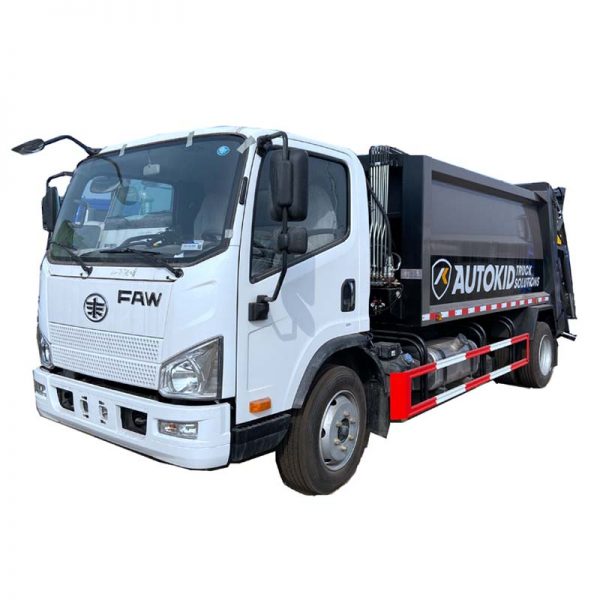Introduction
Water tank trucks play a crucial role in various industries, such as construction, agriculture, and municipal services. These specialized vehicles are used to transport large quantities of water to different locations for specific purposes. Managing a fleet of water tank trucks efficiently is essential to ensure optimal performance, cost-effectiveness, and safety. In this article, we will explore strategies for effective water tank truck fleet management, including maintenance, scheduling, route optimization, and driver training.
Importance of Water Tank Truck Fleet Management

Effective fleet management is vital for organizations that rely on water tank trucks to deliver essential services or products. Proper management helps in optimizing resources, reducing costs, improving productivity, and ensuring compliance with regulations. By implementing best practices in fleet management, companies can enhance operational efficiency, minimize downtime, and increase customer satisfaction.
Maintenance Strategies for Water Tank Trucks
Regular maintenance is key to ensuring the reliability and longevity of water tank trucks. A well-maintained vehicle is less likely to break down, resulting in fewer disruptions to operations and lower repair costs. Here are some maintenance strategies for water tank trucks:
1. Scheduled Maintenance: Establish a routine maintenance schedule for each water tank truck in the fleet. This schedule should include regular inspections, oil changes, filter replacements, and other preventive maintenance tasks.
2. Record-Keeping: Maintain detailed records of all maintenance activities, including dates, services performed, and parts replaced. This information can help track the vehicle's maintenance history and identify any recurring issues.
3. Proactive Repairs: Address any issues or potential problems promptly to prevent them from escalating into major repairs. Regularly check for leaks, worn-out parts, and other signs of wear and tear.
4. Driver Inspections: Encourage drivers to perform daily pre-trip inspections to identify any visible issues with the water tank truck. Drivers should check the tires, brakes, lights, and fluid levels before starting their shifts.
Scheduling and Dispatching
Efficient scheduling and dispatching are essential for optimizing the use of water tank trucks and maximizing productivity. By Flatbed truck load tarping and assigning jobs effectively, companies can reduce idle time, improve resource allocation, and meet customer demands promptly. Here are some strategies for effective scheduling and dispatching:
1. Centralized Dispatching: Implement a centralized dispatching system to coordinate all water tank truck activities. This system allows dispatchers to assign jobs, track vehicles, and communicate with drivers in real-time.
2. Route Optimization: Use route optimization software to plan the most efficient routes for water tank trucks. Consider factors such as traffic conditions, distance, and delivery windows to minimize fuel consumption and reduce travel time.
3. Job Prioritization: Prioritize jobs based on urgency, location, and customer requirements. Assign high-priority jobs to the nearest available water tank truck to ensure timely delivery.
4. Communication: Maintain open communication channels between dispatchers and drivers to relay important information, updates, and changes to the schedule. Use telematics systems to track vehicle locations and monitor driver performance.
Route Optimization
Optimizing routes is crucial for reducing fuel consumption, minimizing vehicle wear and tear, and improving on-time delivery performance. By leveraging technology and data analytics, companies can identify the most efficient routes for water tank trucks, leading to cost savings and increased operational efficiency. Here are some tips for route optimization:
1. Real-Time Traffic Updates: Use GPS and telematics systems to access real-time traffic information and adjust routes accordingly. Avoid congested areas, road closures, and construction zones to minimize delays.
2. Load Optimization: Consider the weight and volume of the water being transported when planning routes. Distribute loads evenly across the fleet to prevent overloading and ensure safe transportation.
3. Geofencing: Create geofences around designated areas or customer locations to track vehicle entry and exit times. Geofencing helps monitor driver behavior, enforce compliance with delivery schedules, and improve overall fleet efficiency.
4. Data Analysis: Analyze historical route data, traffic patterns, and delivery times to identify opportunities for route optimization. Use predictive analytics to forecast future demand and adjust routes proactively.
Driver Training and Safety
Investing in driver training and safety programs is essential for promoting safe driving practices, reducing accidents, and improving overall fleet performance. Well-trained drivers are more likely to operate water tank trucks responsibly, adhere to traffic laws, and follow company policies. Here are some best practices for driver training and safety:
1. Defensive Driving: Provide drivers with defensive driving training to help them anticipate potential hazards, react quickly to emergencies, and avoid collisions. Emphasize the importance of maintaining a safe following distance, obeying speed limits, and using turn signals.
2. Vehicle Handling: Train drivers on how to operate water tank trucks safely, including loading and unloading procedures, maneuvering in tight spaces, and controlling the vehicle on various road conditions. Regularly review best practices for driving heavy-duty vehicles.
3. Compliance Training: Educate drivers on relevant regulations, industry standards, and company policies related to water tank truck operations. Ensure that drivers are aware of weight restrictions, hours of service regulations, and other compliance requirements.
4. Safety Inspections: Conduct regular safety inspections of water tank trucks to identify any mechanical issues, safety hazards, or maintenance needs. Encourage drivers to report any safety concerns promptly and address them accordingly.
Conclusion
Effective water tank truck fleet management is essential for optimizing resources, reducing costs, and improving overall operational efficiency. By implementing maintenance strategies, scheduling and dispatching practices, route optimization techniques, and driver training programs, companies can enhance fleet performance, ensure safety compliance, and deliver exceptional service to customers. By prioritizing fleet management best practices, organizations can achieve long-term success and maintain a competitive edge in the industry.
